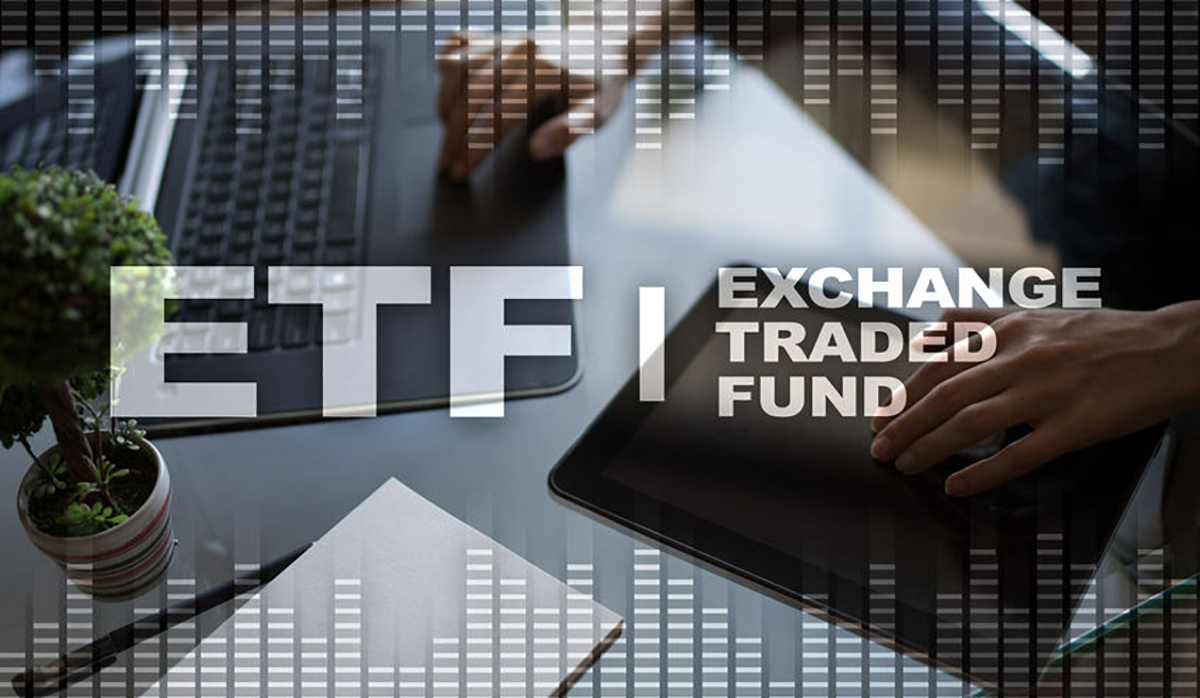What does ETF stand for?
An ETF is an Exchange Traded Fund.
In general, an ETF is a basket of securities that you can buy and sell on the relevant stock exchanges through a brokerage firm or an online trading platform. ETFs are similar to mutual funds but give investors the ease of stock trading and the diversification benefits of mutual funds, combining the best attributes of both assets.
Introduced in the 1990s as a way to provide access to passive indexed funds, ETFs have gained a lot of popularity among both institutional and individual investors looking for better alternatives to mutual funds.
Nowadays, everything traded on commodity and stock exchanges can be packaged in an appropriate exchange traded fund, e.g., iShares Nasdaq Biotechnology ETF (IBB), ARK Next Generation Internet ETF (ARKW), Global X Lithium & Battery Tech ETF (LIT).
There are currently more than 7 000 such funds, and new ones are constantly being created to meet any trader’s needs, but what are the most popular basic types of ETFs and what assets do they track?
The most popular types of ETFs
Below are some of the most popular types of ETFs, with a short explanation of each.
Equity ETFs
Equity ETFs track equity indexes or sectors. They can cover different-sized businesses and specific regions or target sectors (e.g., bioengineering stocks, tech stocks).
Popular Equity ETFs: SPDR S&P 500 ETF (SPY), Vanguard Information Technology ETF (VGT)
Bond or Fixed Income ETFs
Bonds and bond ETFs tend to moderate the portfolio’s volatility. They are also called fixed income ETFs because they provide a steady return at a potentially lower risk than equity ETFs.
Popular Bond ETFs: Direxion Daily 20+ Year Treasury Bull (TMF) 3X Shares, the iShares Convertible Bond (ICVT)
Currency ETFs
Investing in foreign currency ETFs is a way to protect the value of your U.S.-denominated investments against the depreciating dollar. It’s worth mentioning that investment in currency should represent only a small portion of your overall investment portfolio.
Popular currency ETFs: Invesco CurrencyShares® Swiss Franc Trust (FXF), WisdomTree Chinese Yuan Fund (CYB)
Commodity ETFs
Commodity ETFs are exchange traded funds that invest exclusively in certain commodities such as oil, silver, and gold. Having commodity ETFs in your investment portfolio plays an important part in the portfolio’s return.
Popular commodity ETFs: Credit Suisse X-Links Gold Shares Covered Call ETN (GLDI), Aberdeen Standard Bloomberg All Commodity Strategy K-1 Free ETF (BCI)
Specialty ETFs
Specialty ETFs, such as inverse funds, offer higher growth potential but, at the same time, have a greater risk. Due to the increased popularity of ETFs, a variety of special funds emerged to meet a wide range of investment strategies.
Popular specialty ETFs: Vanguard FTSE Emerging Markets ETF (VWO), iShares International Dividend Growth ETF (IGRO)
Real Estate ETFs
Real Estate ETFs invest in a particular real estate market, e.g., the U.S. real estate market.
Popular Real Estate ETFs: Schwab US REIT ETF (SCHH), Vanguard Real Estate Index Fund (VNQ)
Sustainable ETFs
Sustainable ETFs, as their name suggests, are funds investing in companies with strong environmental, social, and governance (ESG) policies that are better positioned to manage sustainability risks. Since sustainability and sustainable investing are the latest trending words in the ETF industry, around 72% of the U.S. population is interested in this field.
Popular sustainable ETFs: iShares MSCI Global Impact ETF (SDG), First Trust NASDAQ Clean Edge Green Energy Index Fund (QCLN)
Advantages and disadvantages of investing in ETFs
Advantages of ETFs
As a whole, ETFs are considered as riskless investments due to their diverse nature. They are an ideal solution for most individual investors. Let’s see why.
Diversification
As was mentioned at the beginning, one of the most positive aspects of investing in ETFs is that they give you exposure to a basket of products ranging from stocks and bonds to currencies and commodities.
Ease of trading
ETFs trade like stocks; they can be bought and sold at any time of the day.
Transparency
Investing in an indexed ETF is a completely transparent process. Their indices are published daily and can be seen at a glance.
Lower fees
Passively managed ETFs give you the lowest fees of the main investment products.
In the long run, they save traders a lot of money.
Tax efficiency
ETFs are usually more tax efficient than mutual funds due to the lower level of capital gain distributions.
Disadvantages of ETFs
Tracking errors
Tracking errors occur because the total return performance of the ETF lags behind the total return performance of its underlying index. Some specialty ETFs often have large tracking errors.
Higher costs
Usually, ETFs are compared to other investment funds, but if they are compared to investing in particular stocks, then the costs are higher.
Lower Dividend Yields
It is logical to assume that the less risky an investment, the lower the expected return. The yields of owning dividend-paying ETFs are unlikely to be as large as the return on a high-yielding stock ownership.
Little control
By buying an ETF, you are actually buying a basket of assets without the right to vote on what securities should be bought or sold in that ETF.
How do you protect your ETFs?
You need to consider several major aspects to protect your ETFs.
Investment risk protection
As with all investments, there is an associated risk when trading with ETFs. Keep in mind that it’s your investment decision. Before investing in a particular ETF, conduct your own due diligence.
Security risk protection
Monitor your ETF accounts for any suspicious activity. Make sure that all of the transactions that appear in your statements are authorized by you. Also look for any account changes that you do not recognize.
Financial risk protection
ETFs, like anything you buy, go hand in hand with costs and fees. Know the fees you are paying. Thoroughly research the trading platform or broker that you intend to use and verify that they don’t have hidden fees.
Beware of investment scams
Look for the red flags of investment scams. A little attention to these may save you from handing over your money to fraudsters.
Inherent ETFs protection
Many people think that by investing in ETFs and other investments, they are protecting their families and loved ones. But statistics show that there is an accelerating pandemic of unclaimed assets globally. A specially designed service for digital inheritance and asset protection is a must-have tool for any financially mindful investor.
The primary focus of the digital inheritance and asset protection tool is to protect the inheritance of the ETFs and the assets as a whole.




